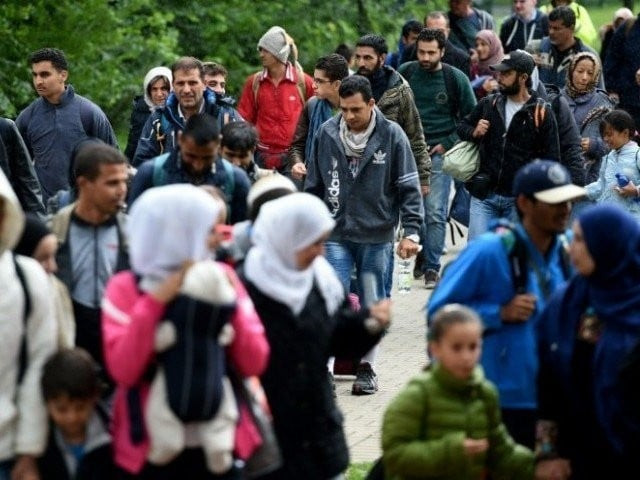Austria warns migration crisis could lead to use of force on borders
Germany has re-imposed border controls and curbed rail traffic from Austria in an effort to slow an influx of migrants

Germany has re-imposed border controls and curbed rail traffic from Austria in an effort to slow an influx of migrants. PHOTO: AFP
Germany has re-imposed border controls and curbed rail traffic from Austria in an effort to slow an influx of migrants, thousands of whom reach its territory daily.
By contrast, Austria is largely letting migrants stream onto its soil from Hungary unhindered and shuttling them towards Germany.
Asked by a reporter what would happen if Germany "seals the border", Interior Minister Johanna Mikl-Leitner said: "Then there will be a massive backlog here in Austria and therefore here we quickly need a European answer.
Read: German president warns of limits to number of refugees
"Otherwise there will consequently be only two possibilities: either we carry on as until now, or there will be strict controls at the borders," she told reporters before a cabinet meeting. "But then we must presume that images of force will emerge, that the use of force will be necessary."
Germany's suspension of regular traffic on one major rail link with Austria has prompted many migrants to cross the frontier by other means. Hundreds line up at a crossing near the Austrian city of Salzburg each day.
Read: Migrant pressure grows at Austrian border
Austrian Chancellor Werner Faymann has emphasised the importance of coordinating with Germany on the matter, even though the neighbours have not always acted in unison in the crisis triggered by an unrelenting influx into the European Union this year of hundreds of thousands of people fleeing war and poverty in the Middle East and Africa German Austrian announcements of border controls more than two weeks ago, for example, were made days apart.
At a news conference on Tuesday, Faymann warned against the use of expressions such as "sealing the border". He said German controls were in place, and Austria would have to deal with the build-up of migrants on its territory waiting to reach Germany.
Germany, the EU's biggest economy, where almost all migrants entering Austria hope to end up, expects the number of arrivals on its soil this year to reach 800,000, and warned on Tuesday there were limits to how many it could absorb.
Austria would have to show Germany that it was taking in enough asylum-seekers of its own, Faymann said.
Austria had one of the highest rates of asylum-seekers in the EU before the crisis, and has taken in migrants who have chosen to request asylum rather than continue into Germany.
Read: Hungary sending migrants towards Austria on trains without registration –UNHCR
"The impression must not arise in Germany that the Austrians are doing the same thing as the Hungarians, simply moving people on," Faymann told reporters, referring to the anti-immigrant Budapest government's policy of swiftly shunting tens of thousands of migrants to its frontier with Austria.
Of the more than 167,000 migrants who have reached Austria since early September, more than 90 percent carried on into Germany, he said. "We must show Germany through cooperation that we are fulfilling our duty. Hard facts make for good friends."



















COMMENTS
Comments are moderated and generally will be posted if they are on-topic and not abusive.
For more information, please see our Comments FAQ